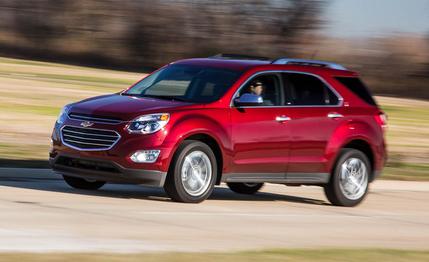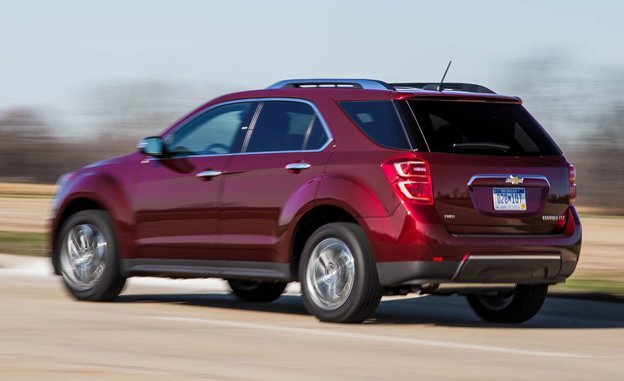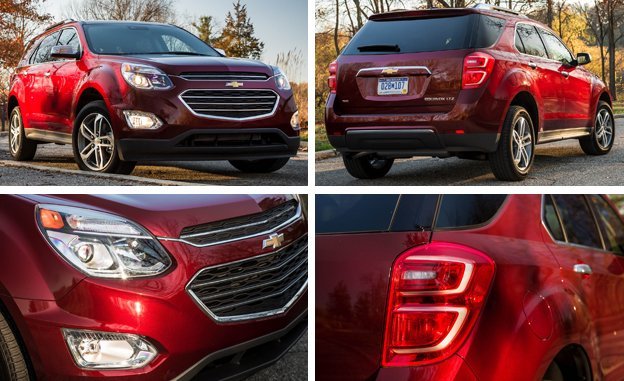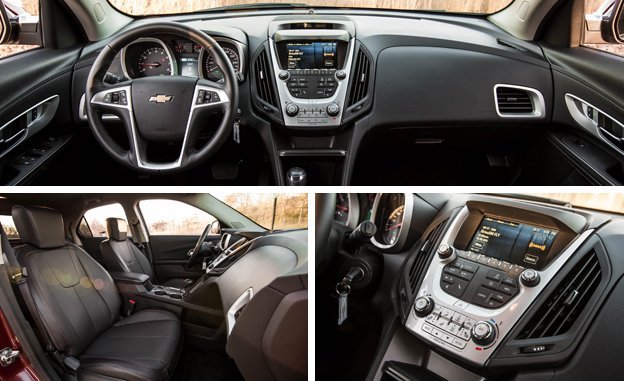
 Instrumented Test
Instrumented Test
Although it was freshened for 2016—updated styling, a couple of new safety features, more infotainment goodies including an onboard Wi-Fi hotspot—the Chevrolet Equinox cruises blithely into the new model year very much the same small crossover that rolled onto the scene six years ago as a 2010 model.
This is a very hot market segment right now, chockablock with all kinds of attractive offerings. Honda’s CR-V is America’s perennial sport-utility bestseller; the Ford Escape, extensively revised for 2017, is hard on its heels; and the Mazda CX-5 remains our favorite in the category.
The Equinox doesn’t threaten those three, but its sales nevertheless are running well ahead of 2014 and near the front of the field among the 16 or 18 horses in this derby—and second overall among all Chevrolet vehicles. Can the recent updates elevate our opinion of the Equinox? We borrowed a top-of-the-line 2016 all-wheel-drive LTZ to find out.
As noted, the 2016 the Equinox is mechanically indistinguishable from its immediate predecessors. It has the same all-wheel-drive system, the same six-speed automatic transmission, and the same base 2.4-liter four-cylinder engine with 182 horsepower and 172 lb-ft of torque.


You might expect this to produce track-test results identical to the four-cylinder Equinox we ran back in August of 2009, but your expectations would be off by a wink or two here and there—the new one is a couple tenths slower to 60 mph and almost two seconds slower to 100 mph.
Mark that down to a 246-pound weight gain compared with that 2010 Equinox, a vehicle we described as “on the hefty side of the segment.” Much of that is attributable to our 2016 test example’s all-wheel drive—the earlier one was front-drive—but content also contributes. We tested a relatively basic LT trim level in ’09, while this sample was a loaded LTZ edition.
But the two vehicles were identical in a couple of key powertrain traits, neither of them endearing. For one, the shift programming seems to have been conceived for the EPA certification cycle rather than for real life; the electronic brain of the six-speed transmission tries its best to get into top gear by the end of the driveway. With a rather tall torque peak—4900 rpm—this drains the zip from stoplight getaways.
The transmission does offer a manual-shift option, achieved via a thumb switch atop the shift lever, which is very awkward to operate. We suspect owners will try it once or twice and then dismiss it. We certainly did.


Maybe the transmission is so eager to get to the higher gears because it wants to spare the driver the sound of the engine revving. Max power comes on at 6700 rpm, and hearing this engine strain for peak revs is not at all inspirational. Although the Equinox is exceptionally quiet at freeway cruising speeds, the sound issuing from beneath the hood at wide-open throttle is quite coarse.
One positive effect of the four-cylinder’s unrefined voice is that it discourages vigorous use of the throttle, which may account for our observed-fuel-economy result: 21 mpg during the course of this test versus 18 back in 2009, despite all-wheel drive and the additional mass.
While this powertrain is uninspiring, the Equinox gives a surprisingly good account of itself on rural back roads, as well as on interstates. The chassis is free of quivers, body motions are moderate, transient responses are prompt if not really eager, and ride quality is agreeably firm.
We do wish for a little more information from the steering, which is nicely weighted but short on accuracy, provoking little adjustments after the driver has chosen an initial line in a constant-radius turn.


The fade-free braking performance is slightly below average for this class in terms of distances. It’s worth noting, though, that the average can’t be called good. Average does apply to the Equinox's lateral grip (0.79 g), and overall it stacks up as competent. Still, let’s not confuse competent with engaging; there’s nothing about this vehicle that’s likely to provoke a Sunday-morning excursion for the sheer enjoyment of driving. But if the Equinox is short on joie de drive, it has a good many other virtues.
The Equinox’s freshened exterior continues to be attractive among these compact boxes. The interior looks good, particularly in this fancy LTZ trim with its heated leather seats, navigation, upscale audio system, and contemporary infotainment tech, and it has acceptable fit and finish at this price point. Roominess is excellent and in line with the standards of this class, the seating is comfortable, and our measured interior-noise levels are at or near best-in-class—provided the driver refrains from demanding too much of the engine, that is.
Yes, there is the option of a 3.6-liter V-6, one of the few still available in this class. With 301 horsepower and 272 lb-ft of torque, it lends a lot more urgency to forward progress and increases towing capacity from 1500 to 3500 pounds. On the other hand, the V-6 drags down fuel-economy ratings—still an important consideration, even with cheap gas—from 20/29 mpg for the all-wheel-drive four-cylinder to 16/23 for the V-6 with all-wheel drive. Also, the V-6 is available only in the top two trim levels.
At $34,755, our LTZ had just about everything but the V-6. But you can bolt yourself into an Equinox for considerably less. The pricing ladder starts at $23,495 for a front-drive L model with this so-so four-banger. Memo to Chevrolet: Swap the Equinox’s 2.4 for the 2.0 turbo that propels the new Malibu. Perhaps that change will come with the next-generation Equinox, which is expected to appear shortly.